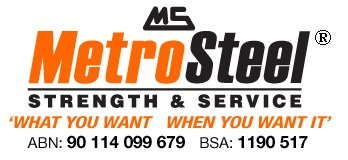Sheet metal plays a large part in the steel industry – almost every type of producer relies on parts, components, devices, or structures which are a direct outcome of sheet metal fabrication. From sensitive digital assemblies through to large commercial structures, sheet metal has a vital role to play.
What is sheet metal fabrication exactly?
Sheet metal fabrication consists of almost as many different process and tools as the applications for which it’s used. The common goal, however, is to use a particular process and tool to turn a sheet of metal into something that can be used for a particular task. This can be done with a variety of method, including:
-
Laser cutting – This can involve many different tools from fairly basic to more complex. Laser cutting is often required for tough materials and speciality alloys. The reason for this is that laser cutting permits a greater level of accuracy and precision when cutting while computer system helped programs ensure that the most effective patterns are used.
-
Bending and forming – Unique tools such as press brakes are used in the flat sheet metal bending procedure to produce V flexes, U flexes, and custom forms. Machining, stamping, and folding are typical methods employed to form or flex metal. Elastomer and rotary flexing can produce brand new shapes even with a fragile surface area while punching with the use of a die, is a good example of precision fabrication.
-
Joining – In some cases, it’s not possible to create a part from a single flat sheet of metal so it has to be welded or assembled in such a way as to bring two or more parts together. Methods to create a single bound metallic part include brazing, adhesives, welding and fascinating.
-
Finishing – When a sheet of metal has been turned into a complete piece, either by bending, forming, or cutting, it can be ended-up and finished with powder, silk screening, paint, and other customised surface treatments. A few of these treatments are designed to give the metal piece another characteristic, such as additional strength, conductivity, resistance to particular chemicals, or resistance to corrosion.
Material selection
Some materials are easier to process than others, which makes the choice of product crucial in any sheet metal procedure. Besides achieving the best possible outcome in terms of expense and performance, a well-researched product option can save money, energy, and time spent on a project.
If you’re in need of steel parts or components for your next project then come and talk to the experts at Metro Steel. We can create a design, develop a plan for its production, and deliver a premium final product. Thanks to hassle-free in-house manufacturing we can produce a quality product that’s accurate, functional, and aesthetically pleasing for an affordable price.
Give Metro Steel a call on 07 3204 1000 and let’s start talking!
 Talk to an Expert (07) 3204 1000
Talk to an Expert (07) 3204 1000 Working Hours - Mon – Fri 7:00 AM – 4:00 PM
Working Hours - Mon – Fri 7:00 AM – 4:00 PM